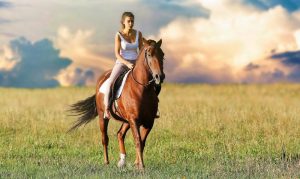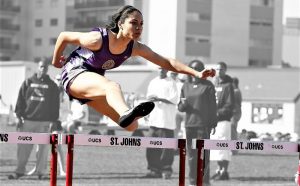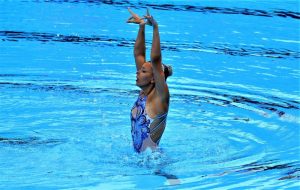Horse riding
Horse riding may not be one of the best known sports, but it is one of the most complete. The reality is that horseback riding is more than a sport, as it helps us exercise multiple parts of the body and clear the mind.

Related topics
Classical dressage, polo, trot, turf
What is horse riding?
Horse riding has been an Olympic sport since 1912, consisting of the art of maintaining control over a horse. It consists of different modalities where precision, obedience and the care of the foal are keys to success.
About horse riding
Horse riding basically consists of maintaining precise control over a horse. Factors such as domestication and knowing the procedures for good care of horses, are essential for riders who want to perform in this sport.
Characteristics of horse riding
The main characteristics of horse riding are:
- Control over the horse.
- The position of the rider.
- Control and looseness of the horse to perform the basic airs in different terrains. These airs or natural types of step of the horse are the departure, the stop, the step, the trot, the gallop and the stretched gallop.
History
From the moment humans realized that horses could become elements to be transported more easily, it became a focal point for the growth of the human race.
First of all, in the Bronze Age equines were domesticated for this purpose. Later, in the Ancient Age, horse began to be used for war purposes. Subsequently, the Middle Ages were characterized by Spanish cavalry, where the first knights were formed to fight in combat. Later, it began to generalize the use of steeds in games to train horses, so that the riders were prepared for future wars.
In 1539 was born in Ferrara, Italy, the first horse riding school that is registered, representing the birth of horse riding for sporting purposes.
Disciplines
Horse riding became part of the Olympics in 1912 at the Stockholm Olympics. There are currently three horse riding disciplines:
- Classical Dressage: In this discipline, the rider must perform a series of movements indicated with a specific type of air. In addition, factors such as control over the horse, execution, rider posture and facility to perform the exercise are evaluated.
- Obstacle Jumping: Consists of avoiding a series of obstacles on the track. Usually the order of the obstacles will vary according to the type of test.
- Raid: This is a variant of the regular jumping of obstacles, since it is necessary to cross a field where natural (water, reliefs, bumps) as well as artificial obstacles must be avoided. It is one of the favorite disciplines for the riskiest riders.
- Complete: Probably one of the most complicated disciplines for riders and their horses. There is a series of training tests, a series of obstacle jumps on the track and a field course where a series of obstacles must be overcome in various terrains. The jurors evaluate the precision of the jumps, the elegance of the riders and the precision of the obstacle jump.
- Cowboy Dressage: It is quite similar to classical dressage or training, but the movements are carried out in a more accelerated way. This variant of dressage is usually common in rural areas.
- High School: It is a discipline that requires more control because the horse must perform a series of exercises, but the rider must be on land.
Horse riding competitions
Horse riding competitions are usually divided into categories of minors and adults. Like other sports, the categories consist of children, cadets, youth and adults. Also, competitions are usually held on weekends and consist of three days of competition.
In addition, for horsemen and women riders who practice horse riding, the competitions represent a special incentive for them to measure themselves against their peers, to evaluate the performance of their steeds and to determine their faults and virtues.
Rules
Contest tracks must be regulatory and have the meters established in the RFHE, which usually consist of 20×40. The number of horses per race is not established. The jury evaluates the performance of the rider/amazons on a scale from 1 to 10. In turn, juries usually consist of between 3 and 5 members.
Likewise, some of the most common horse riding penalties are for disobedience, if the horse refuses to execute a movement. If a course error is made or if an obstacle is not jumped. Similarly, a fall of the rider / rider or an excess of time limit leads to a loss of points.
Clothing
The rider’s equipment must consist of:
- Pants
- Helmet
- Gloves
- Boots
For its part, the team for the horse is fundamental:
- Saddle
- Stirrups
- Bandages or protectors
- Bells
- Sweatshirts
- Stable Bridle
- Branch
- Carabiner
- Flanges
- Bum bags
- Horse cleaning equipment.
Featured riders
- Juan Antonio Jiménez Cobo: Born in Córdoba in 1959, he is one of the most successful Spanish riders reaching a silver medal in the 2004 Olympic Games in Athens in the dressage modality.
- Ludger Beerbaum: A German rider born in Detmold in 1963, he is considered one of the best in history. He has participated in 5 Olympic Games, won gold medals and has been in first place in the world ranking of FEI (International Equestrian Federation) on multiple occasions.
- Bill Roycroft: (1915-2011) Born in Victoria, Australia, and achieved among many other achievements, the gold medal in the games at the Olympic Games in Rome 1960 in the form of jumping.
- Rodrigo Pessoa: He is a Brazilian rider who was born in Paris, France in 1972. He is recognized for being the winner of the gold medal at the 2004 Olympics in Athens.
Curiosities of horse riding
- It’s one of the sports where men and women compete equally.
- Many sports such as polo derive from horse riding.
- It has been an Olympic sport since the Stockholm Olympics in 1912.
- It is considered a highly expensive sport due to the care horses must have.
How to cite this article?
Briceño V., Gabriela. (2019). Horse riding. Recovered on 3 January, 2025, de Euston96: https://www.euston96.com/en/horse-riding/









